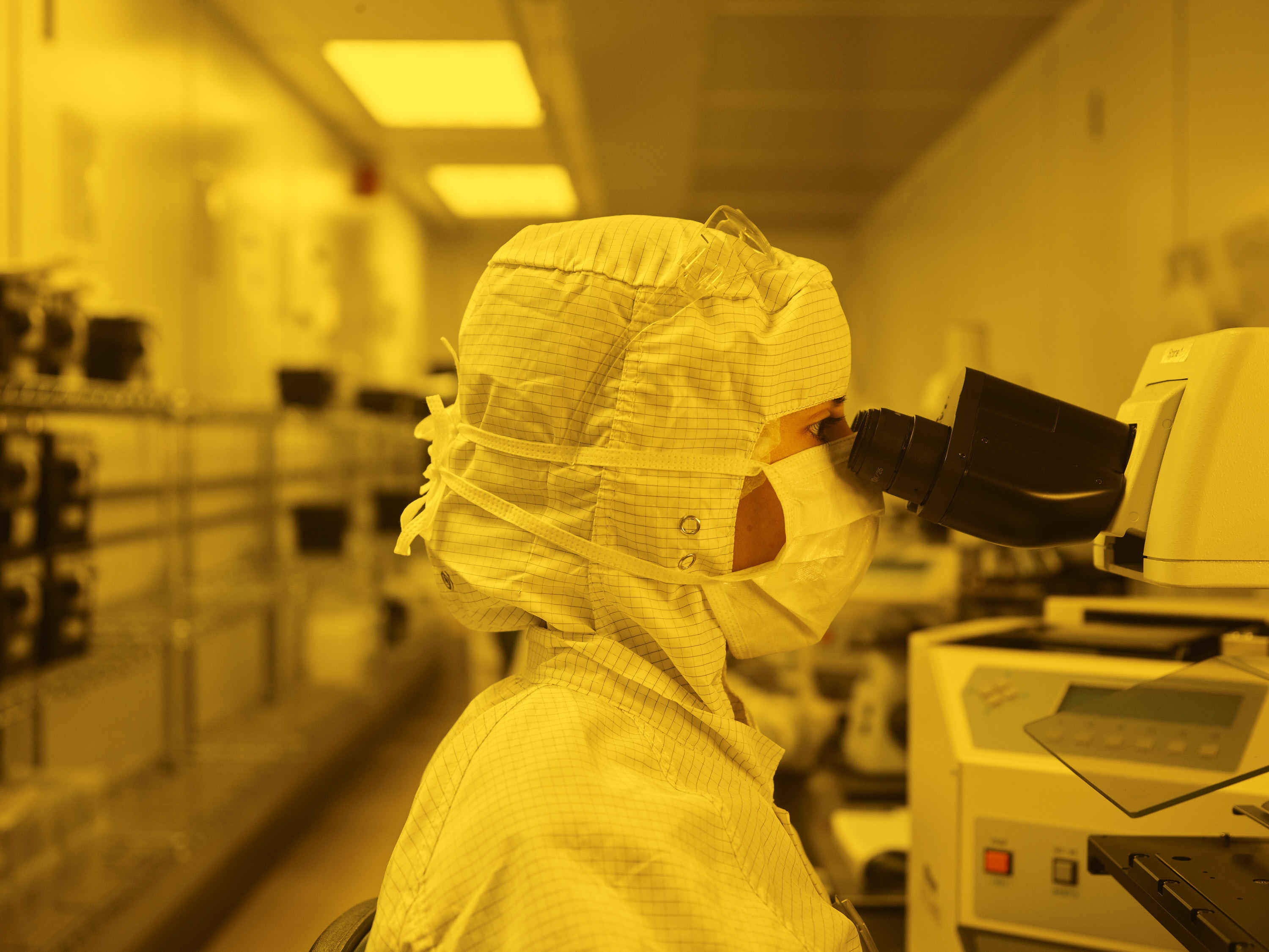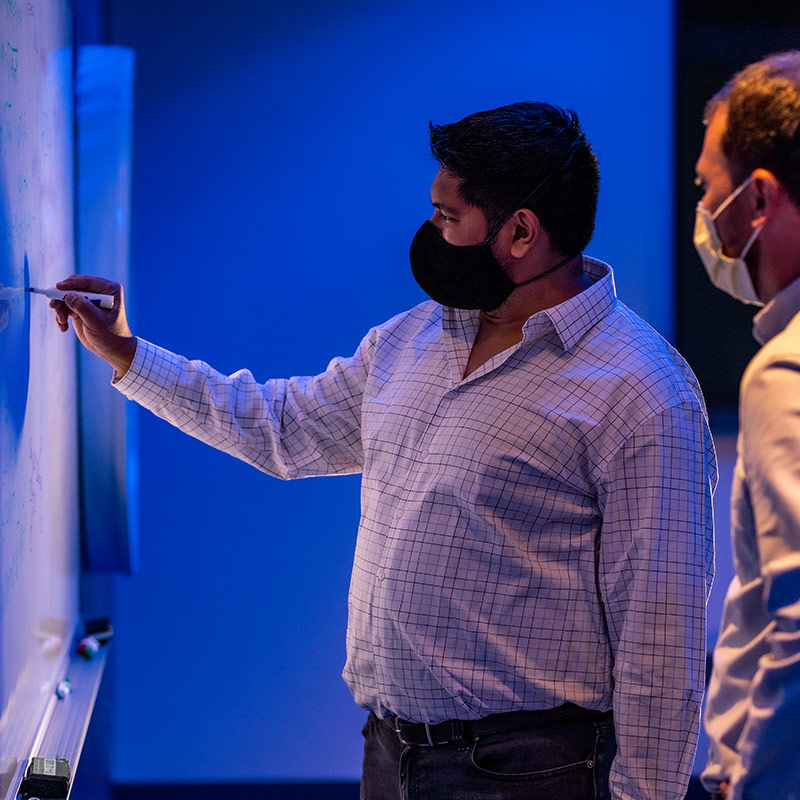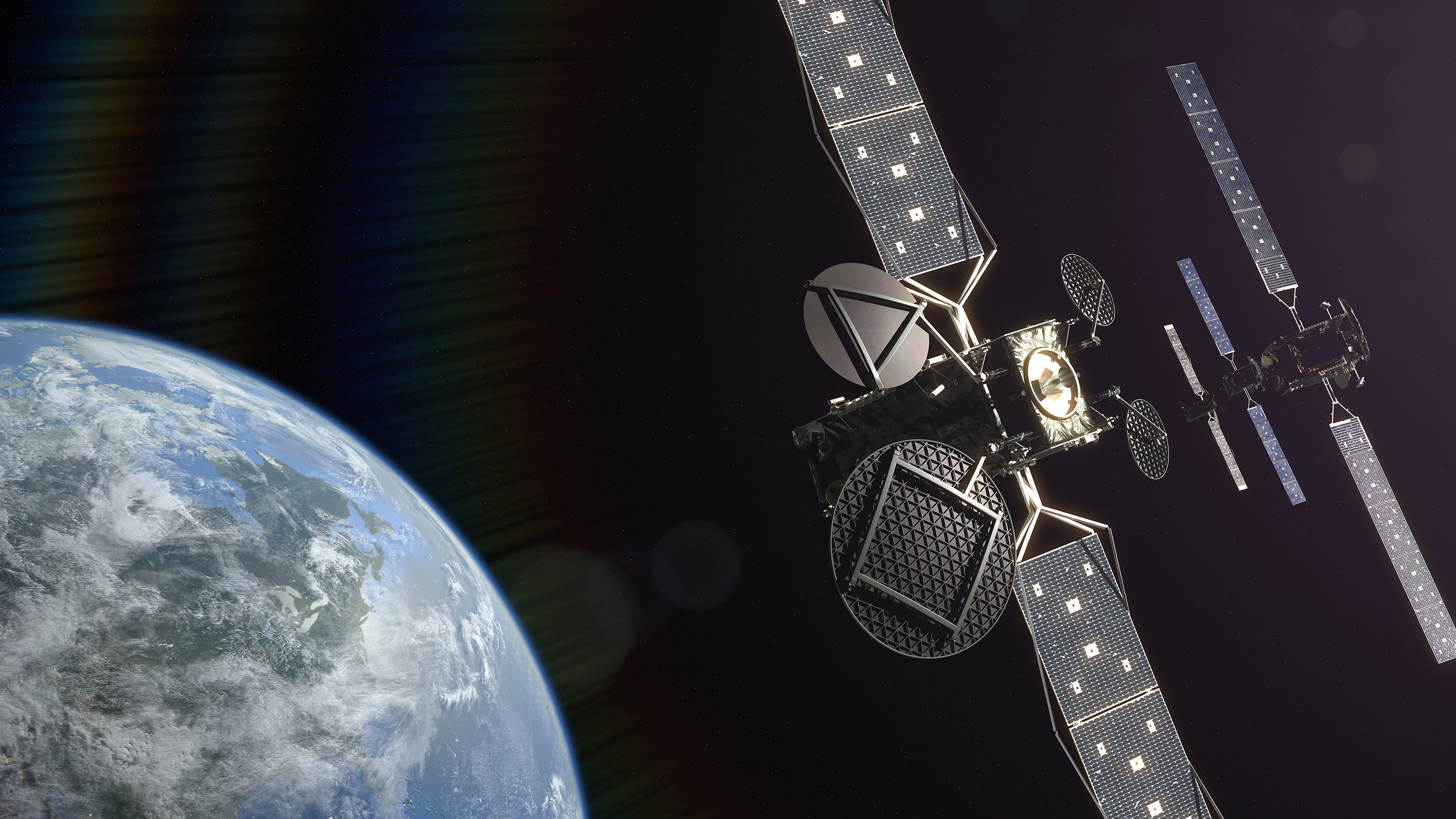SharkSat Scales Up to Deliver Advanced Technology Demonstration

By Doug Bonderud
Until recently, there was a shark in space. It was hurtling around the globe day after day, week after week, exposed to the harsh environment of space while mounted to the Cygnus spacecraft at low earth orbit (LEO). Spoiler alert: It was not an actual shark — it was Northrop Grumman’s SharkSat, an advanced technology demonstration effort designed to explore the potential impact of Ka-band, software-defined radio in space and cultivate the next generation of talent and leadership within Northrop Grumman.
As a showcase of sheer talent and determination, SharkSat offered a window into the evolving and dynamic career culture at Northrop Grumman. As a pioneering effort to create and launch a space-worthy payload in less than two years, it was a testament to the commitment, drive and creativity of our engineering teams.

Making (Radio) Waves
Sending radio messages from space isn't as easy as it seems. While traditional L-band frequencies — typically in the 1-2 gigahertz (GHz) range — offer reliable connectivity, the amount of data they can transfer is limited by their available bandwidth, which is in turn limited by the frequency. The lower the frequency, the smaller the bandwidth. The "K" band, which ranges from 12-40 GHz, offers the potential for higher-volume data transfer, but it comes with a challenge. The middle part of this band includes the resonance peak for atmospheric water vapor, making it effectively unusable. Two outlying segments — Ku (or Kurz unten, meaning underneath the K-band) and Ka (or Kurz above) — could help to solve this problem, but communications technologies have historically been unable to deliver the power required to reliably transmit at these higher frequencies and ensure a substantive signal-to-noise ratio.
The SharkSat program took on this challenge with multi-processor architecture designed to support both space-to-space and space-to-ground communication in the Ka-band — while also serving as a trailblazer technology for next-generation systems that have reduced size, weight and power (SWaP) requirements to help shorten development times without sacrificing capacity.

Meet the SharkSat Shiver
Sharks never stop swimming. These ferocious fish are always moving forward, a concept that also applies in the aerospace innovation industry. Northrop Grumman is an example of this drive to move forward from pioneering space solar power beaming, to work on NASA's Space Launch System (SLS) and putting sharks into space. Of course, having a great idea and a stellar name only get you so far. To make the SharkSat solution a reality, the team (or in shark terms, a shiver) had to be ready to take on the challenge of rapidly prototyping and developing something that's never been done before. So, an early-career team of explorers was paired with a mid-late career innovators to get mission-ready for SharkSat launch in less than two years. Challenging? Without a doubt. Aggressive? You bet. Fun? Absolutely.
Scott Wilson, RF Payload Hardware Lead, felt the launch reflected his high hopes for the future.
"It was nice to see a program be able to accept higher risk and demonstrate something that we had high confidence in, especially in commercial space hardware" he confides.
But all the hard work and high pressure are perhaps best summed up by Engineering Technician Madeline Geiman.
"My blood, sweat and tears are in that payload," she says.

Sailing the Solar Sea
Space and the deep sea share common characteristics. Both are harsh, unforgiving environments fraught with potential pitfalls that could negatively impact technology operations and put crewed missions at risk. Underwater, pressure is a prolific problem while orbital efforts often face challenges around electromagnetic interference and communication brown-outs.
SharkSat was designed as an advanced technology demonstration to test the boundaries of LEO operations and help lay the groundwork for next-generation spacecraft solutions. Components of the payload included a multi-processor architecture to support space-to-space and space-to-ground communication targeted toward the development of a Ka-Band software defined radio.
These technologies have uses in fields such as 5G telecommunications, satellite communications, and autonomous and cognitive systems. The SharkSat payload offered a path for next generation space systems to have more capability, reduced size, weight and power (SWaP), lower cost and reduced development timelines. SharkSat served as a stepping stone toward reusing these technologies for multiple applications in the future. Its improvements centered around using advanced and higher performance components that were more capable, yet consumed less power.
SharkSat Success in Space
While in orbit on Northrop Grumman's Cygnus spacecraft, SharkSat proved its worth as a pathfinder for technologies such as Silicon Germanium (SiGe) RF Integrated Circuit Technology, Multiprocessor Systems-on-a-Chip (MPSoC) and NG SpaceEdge Software and Firmware Architecture. After entering the South Atlantic Anomaly (SAA), a region notorious for causing communications brown-outs, SharkSat used its onboard processing hardware at full capacity with no ill effects and then transmitted the results of its processing test to mission control without issue, proving both its capability to operate within the SAA and execute a test-report software capability that was added after launch.
Through the demonstrated success of the SharkSat mission, it’s clear that talented Northrop Grumman teams aren't just swimming in place — they're breaking boundaries to help define what's possible in the next generation of spacecraft design, iteration and communication.
More Innovation Stories
Click here to read all stories about advanced technology and innovation >>


